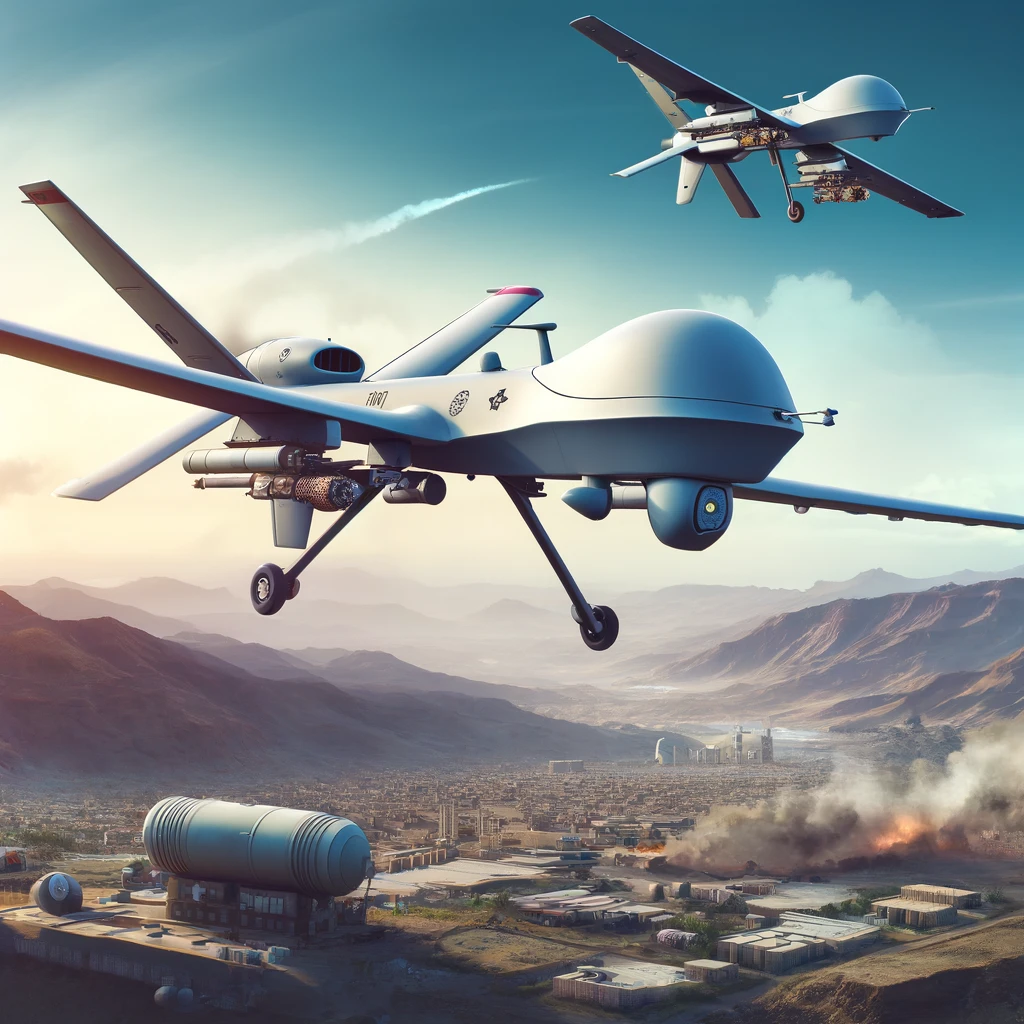
Drones, or unmanned aerial vehicles (UAVs), have dramatically reshaped modern warfare and surveillance, with their use in Yemen providing a clear example of their evolving role in conflict zones. In Yemen, both surveillance and combat drones are used, each serving distinct functions with specific technological capabilities and limitations.

Surveillance drones in Yemen are primarily utilized for gathering intelligence, conducting reconnaissance, and monitoring hostile movements without risking human lives. These drones are equipped with high-resolution cameras, infrared sensors, and radar, which allow them to operate both day and night. The data collected by these drones is crucial for planning military operations and for tracking insurgent activities. However, the effectiveness of surveillance drones can be limited by electronic warfare capabilities such as jamming technologies, which disrupt the communication and navigation systems essential for their operation.
Combat drones, on the other hand, are employed to carry out strikes and support ground operations. These drones are typically equipped with missile systems and are used to target specific locations identified through earlier surveillance. The use of combat drones in Yemen has escalated, reflecting a broader trend towards the militarization of drone technology. The advantage of combat drones lies in their ability to strike with precision while minimizing the risk to personnel. However, they are not without limitations. Their dependency on accurate intelligence means that any failure in surveillance or data interpretation can lead to unintended casualties or damage. Furthermore, the ethical and legal implications of drone strikes, including issues of sovereignty and civilian safety, remain contentious.
The drone technology used in Yemen has seen significant innovations aimed at enhancing efficiency and effectiveness in conflict scenarios. One such innovation is the development of stealth technology, which helps drones evade radar detection, enhancing their survivability in hostile environments. Additionally, advancements in artificial intelligence (AI) have led to improved autonomous capabilities, allowing drones to perform complex tasks without direct human control. These tasks include real-time data processing and autonomous decision-making, which are critical in dynamic combat situations.
The integration of AI has also facilitated the development of swarm technology, where multiple drones operate collectively to achieve a common goal. This technology multiplies the effectiveness of drones, enabling coordinated attacks and widespread area surveillance that would be impossible with single drones. However, the deployment of such sophisticated technology raises concerns about machine ethics and the potential for accidental escalations in conflict.
Despite these advancements, the technological capabilities of drones are still bound by limitations such as battery life, vulnerability to weather conditions, and susceptibility to anti-drone measures. Drones’ reliance on GPS signals and external communications links makes them vulnerable to signal spoofing and hacking, posing significant risks during operations.
The use of drones in Yemen exemplifies the dual role of UAVs in modern conflicts, serving both surveillance and combat functions. Technological innovations continue to expand the capabilities of these drones, enhancing their autonomy and effectiveness in complex environments. However, these advancements also bring forth new challenges and ethical dilemmas, highlighting the complex interplay between technology and modern warfare. As drones become more integrated into military strategies, their technological evolution will likely continue, driven by the demands of modern conflict and the need to address their inherent limitations.
Artistic representation of drones used in Yemen, showcasing both surveillance and combat types, set against a backdrop of Yemen’s landscape.
Artistic depiction of various types of Houthi drones, set in a semi-desert landscape typical of Yemen. The image features a mix of smaller surveillance drones and larger combat drones.